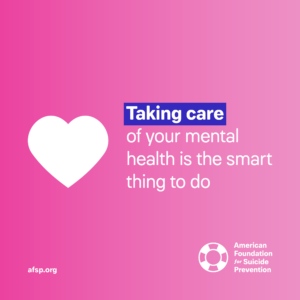September is a crucial month regarding mental health in America. Those who follow our blog know that this is National Recovery Month, which we covered in some detail last week. Hopefully, many of you have taken the time to promote this observance on social media. Now is also a time to celebrate people in recovery and acknowledge the treatment service providers who help men and women make critical changes in their lives. When we shine a spotlight on those committed to leading productive lives while abstaining from drugs and alcohol, we encourage others to seek help.
When alcohol and substance use disorders go without treatment, the outcome is usually tragic. Addiction is a progressive mental illness with no known cure, and like any mental illness left untreated, the symptoms often become deadly. One need only look at the overdose death toll year-after-year or consider the 88,000 Americans who die from alcohol-related causes annually, to see evidence of the disease’s destructive nature. However, we have the power to reduce the number of people who succumb each year by eroding the stigma of mental health conditions. The simple fact is that evidence-based therapies exist; people can and do recover from diseases of the mind provided they have assistance.
While many people who fall victim to addiction do so owing to physical health complications, sadly there are some who decide they’ve had enough. The vicious cycle of addiction takes a significant toll on the psyche of many individuals, and some make fateful decisions that are irreversible. Such persons come to believe that treatment is inaccessible, they convince themselves that recovery is an impossible dream; such resignations can result in suicidal ideations or worse—attempts on one’s life.
Eroding Stigma Saves Lives
One of the most efficient ways to take the wind out of stigma’s sails is by having real conversations about mental health disorders. Anxiety, bipolar disorder, depression, PTSD, and alcohol and substance use disorder are treatable, but many people are of different opinions. What’s more, many of those who live with such afflictions fear what others will think of them if they seek help. It’s as if reaching out for support makes one’s condition more real, and it’s impossible to hide an illness from others if treatment is sought.
Men and women don’t develop a fear of seeking help for no reason, much of society either consciously or subconsciously looks unfavorably upon mental illness. Even individuals with afflicted loved ones can still harbor misconceptions about mental health and the possibility of recovery. Much of society could stand to alter their understanding of mental illness and take a more compassionate approach. People who suspect a friend or family member is battling mental illness can affect change by merely asking how said person is doing or if they need help. It doesn’t matter the type of disease in question, everyone benefits when we open up the dialogue on mental health.
National Recovery Month aside, September is also National Suicide Prevention Month. The American Foundation for Suicide Prevention (AFSP) asks that we reduce suicide risk by making sure we connect with one another and talk about mental illness. The organization points out:
We don’t always know who is struggling, but we do know that one conversation could save a life.
National Suicide Prevention Week
Not too long ago, the World Health Organization (WHO) released a startling figure: more than 300 million people worldwide are living with depression. Major depressive disorder, just one of several mental health conditions, is believed to be the leading cause of mal-health on the planet. It probably will not surprise you to learn that depression is the most common mental disorder associated with suicide. It’s also worth mentioning that depression and addiction often go hand-in-hand, more than half of the people living with a use disorder meet the criteria for a co-occurring mental illness. Moreover, depression like addiction is underdiagnosed and undertreated. The AFSP reports that only 4 out of 10 people receive mental health treatment.
One in four people who die by self-harm is under the influence at the time of their death, according to the organization. It is of the utmost importance that everyone in recovery and those with affected loved ones, spread the message that seeing a mental health professional is a sign of strength. We need to end the pervasive association that seeking assistance is an indication of weakness or failure. There is no time like the present, and there is certainly no time to waste: each year 44,965 Americans die by suicide. The AFSP shares that:
- On average, there are 123 suicides per day.
- Men die by suicide 3.53x more often than women.
- The rate of suicide is highest in middle age (white men in particular).
- White males accounted for 7 of 10 suicides in 2016.
Co-Occurring Mental Health Disorder Treatment
This week and throughout the month, everyone is encouraged to talk about mental illness and what can happen without treatment. We can all benefit from learning the warning signs of mental disorders and share messages with each other that promote treatment. If you would like to get involved, you can find shareable images here. On social media, the hashtags #SuicidePrevention #StopSuicide #RealConvo are trending. Together we can fight suicide!
When addiction accompanies depression, bipolar disorder or any mental disorder for that matter, it heightens people’s risk of suicide exponentially. However, when individuals receive simultaneous treatment for use disorder and their dual diagnosis, long-term recovery is achievable. At PACE Recovery Center, we specialize in the treatment of men living with co-occurring mental health disorders. Please reach out to our team at your earliest convenience to learn more about our evidence-based programs.



